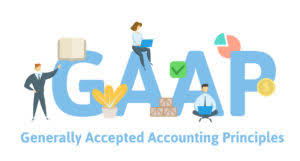
A related account is Supplies Expense, which appears on the income statement. The amount in the Supplies Expense account reports the amounts of supplies that were used during the time interval indicated in the heading of the income statement. Revenues accounts are credited when the company earns a fee (or sells merchandise) regardless of whether cash is received at the time.

This is the default category for any expenses that cannot be directly identified with the cost of sales, selling expenses, finance cost, or taxation. The cost of goods sold does not include any cost incurred on inventory that is unsold at the end of an accounting period, which is why it needs to be subtracted from its calculation. Rent and maintenance overheads are incurred in businesses that rely on motor vehicles and equipment in their normal functions. Such businesses include distributors, parcel delivery services, landscaping, transport services, and equipment leasing. Another type of insurance is professional liability insurance that protects the business (such as an accounting firm or law firm) from liability arising from malpractice. Other types of insurance include health insurance, home insurance, renter’s insurance, flood insurance, life insurance, disability insurance, etc.
Examples of operating expenses
General and administrative expenses typically refer to expenses that are still incurred by a company, regardless of whether the company produces or sells anything. This type of expense is shown on the income statement, typically below cost of goods sold (COGS) and lumped with selling expenses, forming a selling, general and administrative expense line item. Understanding business expense categories helps you with your expense accounts.

For one, it keeps the balance sheet and the accounting equation in balance. Secondly, it demonstrates that revenues will cause the stockholders’ equity to increase and expenses will cause stockholders’ equity to decrease. This will mean the revenue and expense accounts will start the new year with zero balances—allowing the company “to keep score” for the new year. Examples of frequent expenses include supplier payments, employee wages, factory leases, and equipment depreciation.
What is an expense account?
This lets you view your expenses at a glance, making it easy to track costs. Direct and Indirect costs can be declared on the income statement as expenditures list of expenses in accounting since a personal service company does not hold inventory. Direct expenses can be thought of as any costs other than materials and wages.
- Revenues accounts are credited when the company earns a fee (or sells merchandise) regardless of whether cash is received at the time.
- We update the list periodically to reflect new indirect expenses used around the world.
- You can use it to categorize the costs and generate reports with information like the total expenses for each category, helping you stay organized.
- Typically, any cost that does not link to the production or the selling process and is not part of research and development is classified as a general and administrative expense.
- A related account is Supplies Expense, which appears on the income statement.
- Instead, it is added to the cost of the asset and charged as a depreciation or impairment expense over its useful life.